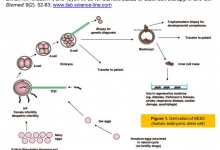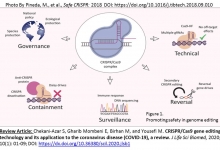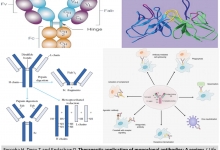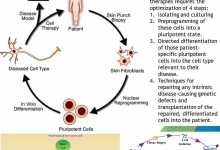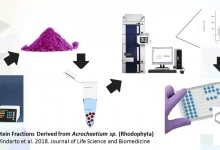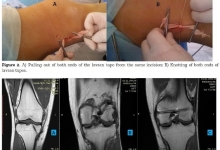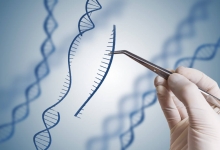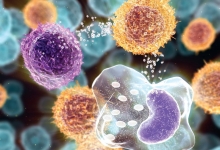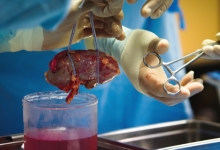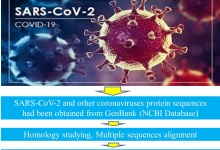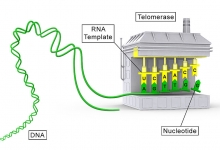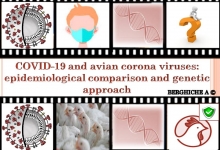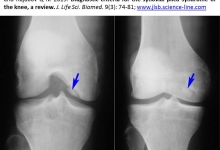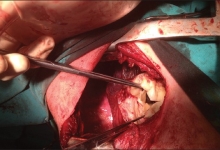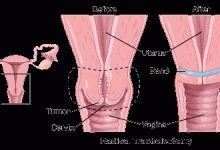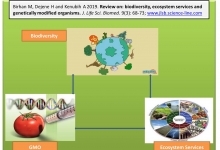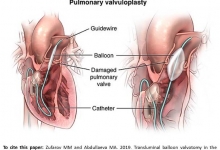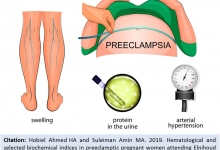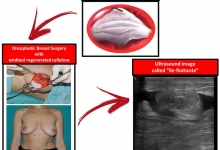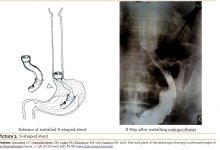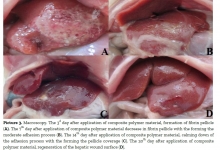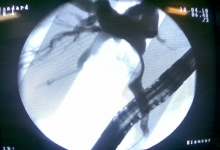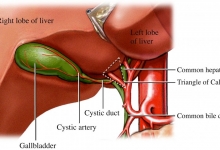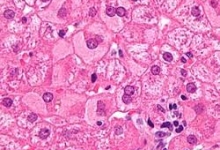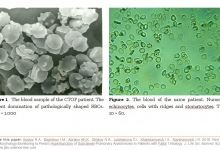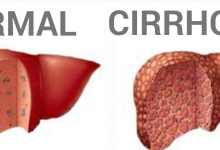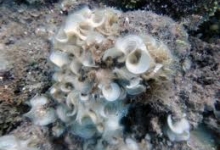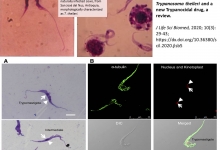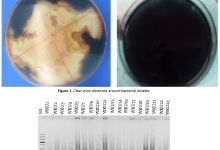Previous issue | Next issue | Archive
Volume 5 (5); September 30, 2015
Research Paper
The Effect of Temperature to Incubation Period, Hatching Rate, Normality and Larvae Size of Lutjanus Johnii Bloch, 1792.
Sugiarto H, Sri Widodo M and Soeprijanto A.
J. Life Sci. Biomed., 5(5): 110-115, 2015; pii:S225199391500023-5
Abstract
This research analyzed the effect of temperature to the incubation period, hatching rate, larva normality and its size, volume of yolk and oil globule of Lutjanus johnii when it hatched so the optimal temperature for embryo growth can be determined. This research was an experimental research with 4 treatments of temperature (26oC, 28oC, 30oC and 32oC) and 3 repetitions. The results showed that incubation period needed at 26oC: 20.11±0.31 hours, 28oC: 17.08±0.425 hours, 30oC: 14.06±0.25 hours and 32oC: 13.08±0.16 hours. The highest hatching rate achieved at 30oC and 32oC temperature (P>0.05) with 93.8±1,52% and 96.12±1,6% while the highest normality was at 28oC and 30oC temperature (P>0.05) with 79.5±4.21% and 83.97±2.59%. The best size at hatch was at 26oC with 1684.35±8.06 µm, while the volume of yolk and oil globule at hatch did not show much difference. Based on the results acquired, incubation temperature at 30oC produced the best hatching rate, normality and larva length.
Key words: Temperature, Incubation Period, Hatching Rate, Normality, Larvae size, Lutjanus johnii
[Full text-PDF] [RICeST] [DOAJ]
Research Paper
Physical Characteristics of Java Barb (Puntius javanicus) Sperm after Stratification with Percoll Density Gradient Centrifugation.
Dwi Faradilah M, Faqih Abd.R and Sri Widodo M.
J. Life Sci. Biomed., 5(5): 116-119, 2015; pii:S225199391500024-5
Abstract
The purpose of this research was to know the physical characteristics of Java Barb sperm which has been separated through sexing with Percoll density gradient centrifugation. Method used was descriptive method. Sperm from male fish which was more than a year old, acquired by pushing gently the stomach to its urogenital opening, immediately brought to the laboratory. Percoll medium concentrations utilized in this research were in 6 levels, they were 10%, 20%, 30%, 40%, 50%, and 60%. Centrifugation was conducted for 5 minutes at 1600 rpm of velocity. Each characteristics observation includes concentration, viability and size of the sperm was done 15 times and then was analyzed with paired T-test. The results showed that there were significant characteristics differences between both formed layers. Top layer of sperm concentration which is supposed to be y sperm was 1.33 more than the bottom layer which is supposed to be x sperm. But for the viability, percentage value of bottom layer sperm was 10% more than the top layer. And the sexing of x and y sperm was supported by the total length gap between top layer sperm (34.19 + 1.96 µm) and the bottom layer (36.70 + 1.74 µm).
Key words: Male Gamete Cells, Centrifugation, Concentration, Viability, Total Length
[Full text-PDF] [RICeST] [DOAJ]
Research Paper
Composition and Abundance of Aquatic Insects in Jurang Susuh Stream, Batu City, Indonesia.
Ayuh Paramita I, Yuli Herawati E, Sudaryanti S.
J. Life Sci. Biomed., 5(5): 120-126, 2015; pii:S225199391500025-5
Abstract
The aims of this study are to determine and identify the aquatic insects in the Jurang Susuh Stream well as to determine its composition and abundance. This study was studied in 13 sampling stations along the Jurang Susuh Stream, Batu City, Indonesia during June to July 2014. A sampling technique was used to collect aquatic insect by stirring the substrate using a feet to steer the aquatic insects, then they were collected at the end of the drag net. A total of 11482 insects representing 28 families from 7 orders were recorded: Coleoptera (5 Families), Diptera (8 Families), Ephemeroptera (2 Families), Hemiptera (5 families), Lepidoptera (2 Families), Odonata (3 Families) and Trichoptera (3 Families). The highest number of aquatic insect was in station 3 (2115 individuals) and the lowest number was in station 5 (300 individuals). We conclude that the water quality of Jurang Susuh Stream influenced the habitat of aquatic insects, especially its composition and abundance. In the stream, the representatives of the orders Diptera and Ephemeroptera were the most abundant groups. Moreover, we suggest that the further studies should be conducted annually in order to determine the composition and abundance of aquatic insect influenced by the seasons.
Key words: Aquatic Insects, Composition, Abundance, Stream.
[Full text-PDF] [RICeST] [DOAJ]
Research Paper
Immunohistochemistry of Gill and Brain Infected by Viral Nervous Necrosis (VNN) in Humpback Grouper (Cromileptes altivelis) Correlated with Β-Actin Expression.
Khumaidi A. Yanuhar U. and Faqih. A.R. 2015.
J. Life Sci. Biomed., 5(5): 127-131, 2015; pii:S225199391500026-5
Abstract
β-actin is a protein which has important roles in the immune system such as clustering receptors, antigen internalization and managing vesicles turnover for antigen processing. There is increasing expression of β-actin at Viral Nervous Necrosis (VNN) infection in the gill and brain of humpback grouper (C. Altivelis). The observation on the percentage of β-actin’s expression in the control group’s fish gill was 31.9% and VNN treatment group’s fish gill was 58.4%. The same happened in the control group’s fish brain, which showed 31.4% and VNN treatment group’s brain showed 72.6%. These increasing percentages showed that during VNN infection, fish body increased the expression of β-actin to improve immune system regulation when facing VNN infection. The result showed that when the VNN infection, the fish will improve B-actin expression to improve the immune response to eliminate VNN.
Key words: Β-Actin, VNN, Immune System, C. Altivelis.
[Full text-PDF] [RICeST] [DOAJ]
Research Paper
Characteristics and Fatty Acid Profile of Refined Fish Oil from Byproduct of Yellowfin Tuna (Thunnus Albacares) Meal Processing.
Budiadnyani I.G.A., Estiasih T. and Yunianta.
J. Life Sci. Biomed., 5(5): 132-136, 2015.; pii:S225199391500027-5
Abstract
Most of the by-product of tuna meal processing is fish oil. Tuna fish oil is a source of polyunsaturated acid (PUFA), especially omega-3 fatty acids such as docosahexaenoic acid (DHA, C22: 6 Ω-3) and eicosapentaenoic acid (EPA, C20: 5 Ω-3). This research aimed to study fish oil refining from byproduct of tuna meal processing, to know the characteristics and fatty acid profile of the by-product oil and the refined fish oil. Degumming with phosphoric acid 85%, neutralization with NaOH 14.36% and bleaching with zeolite adsorbent about 10% (w/w) are steps on byproduct oil refining. Characteristics of the by-product oil and pure oil has been verified by its acidic value, free fatty acid rate, peroxide value, anisidine value and total oxidation (TOTOX) and also its color. The results showed that refining steps were able to improve the quality of fish oil from the byproduct of tuna meal processing to meet international fish oil standards (IFOS) and the color from the refined fish oil was similar to tuna fish oil sold in the market. Dominant fatty acid identified from the byproduct oil and refined oil was unsaturated fatty acid about 63.81% consisting of oleic, linoleic, DHA and EPA. For that reason, the byproduct oil of Yellowfin-tuna meal processing can be considered as fish oil source which is rich in omega-3 essential fatty acid.
Key words: Meal Processing, Byproduct Oil, Refining, Yellowfin Tuna, PUFA.
[Full text-PDF] [RICeST] [DOAJ]
Research Paper
The Prevalence of White Spot Syndrome Virus on Tiger Shrimp (Penaeus monodon) Traditional Farming in Tarakan, Indonesia.
Octovianus, Sukoso and Yanuar, U.
J. Life Sci. Biomed., 5(5): 137-140, 2015; pii:S225199391500028-5
Abstract
White spot syndrome virus (WSSV) is one of the main obstacles in the cultivation of tiger shrimp. Reports of WSSV infection in tiger shrimp traditional farming in Tarakan required for understanding on WSSV control. The paper was analysed 50 samples of tiger shrimps by using nested PCR method, and indicated four positive samples with WSSV molecular weight targets used 1447 bp and 941 bp. The prevalence of WSSV in January - March 2015 amounted to 8%. The results of this study showed that spreading of WSSV in tiger shrimp traditional farming in Tarakan allegedly caused by non-traceable sources of stem thus allowing the shrimps that infected WSSV transmitted from parents, environmental factors and lack of biosecurity applications. We argue that there were WSSV infections with a prevalence of 8% in various infections that showed by Nested PCR and clinical symptoms of infected samples.
Key words: WSSV, Tiger Shrimp, Traditional Farming, North Kalimantan.
[Full text-PDF] [RICeST] [DOAJ]
Research Paper
Utilization of Tilapia Mucus to Inhibit Vibrio harveyi on Vannamei (Litopenaeus vannamei).
Wibowo A, Fadjar M., Maftuch.
J. Life Sci. Biomed., 5(5): 141-148, 2015; pii:S225199391500029-5
Abstract
Shrimp diseases derived from pathogen infection can be caused by bacteria, such as luminous bacteria (Vibrio). Toxins produced by V. harveyi cells in larvae digestive tract cause luminous Vibriosis disease. One way of preventing or pathogenic Vibrio sp. against in shrimp farming is to use shrimp polyculture system with fish. Tilapia fish freshwater or saline has a system in the body that induce antibacterial peptides, its providing an antibacterial effect by inhibiting the growth of V. harveyi. The purpose of this study was to determine the ability of antibacterial from Tilapia mucus (O. niloticus) in inhibiting growth of V. harveyi, knowing the molecular mass of protein Tilapia mucus, knowing the best Tilapia biomass influence on total V. harveyi and survival rate of L. vannamei through polyculture system. The first stage is a test in vitro, it through antibacterial test based on the test disc, the value of MIC, and MBC Tilapia mucus. Furthermore, the second stage is the characterization of mucus through protein fractions using SDS PAGE. The third stage is a test in vivo, application of antimicrobial Tilapia mucus through polyculture system between L. vannamei with Tilapia. Tilapia mucus that has been separated by ethanol has inhibitory diameter against V. harveyi by 11 mm (including blank discs with a diameter of 6 mm). MIC of Tilapia mucus are already separated with ethanol was 4.5 ppm protein and MBC of the mucus was 17.99 ppm. Tilapia mucus that has been separated with ethanol has 6 protein fraction contained antibacterial 233, 88, 26, 25, 23, and 17 kDa. L. vannamei polyculture with Tilapia was resulting V. harveyi amount reduced, but increased survival and THC of L. Vannamei reduction was the highest in L. vannamei polyculture with Tilapia with biomass of 800 g m-3 while the increased survival and THC of L. vannamei were observed in Tilapia 600 g m-3 and 800 g m-3. The conclusion of this study is polyculture between L. vannamei with Tilapia 800 g m-3 was proven to increase survival of L. vannamei.
Key words: Antibacterial, L. vannamei, Polyculture, SDS-PAGE, Tilapia mucus, V. harveyi
[Full text-PDF] [RICeST] [DOAJ]
Research Paper
Characterization of Avicennia marina Leaves Fraction as Antibacterial of Aeromonas salmonicida.
Ekawaty JM, Nursyam H. and Hardoko.
J. Life Sci. Biomed., 5(5): 149-152, 2015; pii:S225199391500030-5
Abstract
Avicennia marina is one of a kind of mangrove species that could be used as a potential antibacterial. The purified fractions of Avicennia marina leaves extract has not been widely studied and it could be expected to be used as antibacterial against Aeromonas salmonicida causing furunculosis disease in freshwater fish farming. Separation of the extract fraction done by using column chromatography. It has been found that F4-b fraction showed the best antibacterial activity against Aeromonas salmonicida which obtained by the eluent at the ratio of ethyl acetate: ethanol was 70:30. The results of identification fraction F4-b with UV-Vis and FTIR suspected that the compound which acts as an antibacterial against Aeromonas salmonicida was terpenoid. Terpenoid can react with porin (trans membrane protein) on outer membrane of Aeromonas salmonicida and damage cell wall of bacteria.
Key words: Antibacterial, Avicennia marina, Terpenoids.
[Full text-PDF] [RICeST] [DOAJ]
Research Paper
The Introduction of Pituitary Gland Extract of Crab-eater Frog (Fejervarya Cancrivora) to Accelerate Ovulation of Eggs and Spawning of Common Carp (Cyprinus Carpio).
Rumondang A, Risjani Y and Fadjar M.
J. Life Sci. Biomed., 5(5): 153-158, 2015; pii:S225199391500031-5
Abstract
Induced breeding by hypophysation technique is widely known as an effort conducted to stimulate ripe fish breeders to induce ovulation of eggs and spawning through injection of pituitary gland. This research was aimed to determine the most effective dosage of frog (F. cancrivora) pituitary gland which best accelerates ovulation of eggs and spawning of common carp fish (C. carpio). The experimental method was performed with 4 different doses treatment levels (0, 0.3, 0.5, and 0.7 ml/kg) per female brood fish with 3 replications. All data collected from the research was then statistically analyzed using Completely Randomized Design (CRD) method. This research indicated that the most effective dosage was T3 treatment with a dose of 0.5 ml/kg of frogs’ pituitary gland per female brood fish. This treatment showed the highest increase of estradiol-17ß concentration (25253.65 ± 1050.68) pg/ml, and the fastest spawning period (12.03 ± 0.44) hours. The result proves that pituitary gland of crab-eater frog (F. cancrivora) can be used for induced breeding of common carps (C. carpio) with competitive performance compare to other pituitaries.
Key words: Hypophysation, Cyprinus Carpio, F. Cancrivora, Pituitary Gland, Estradiol-17β, Vitellogenin, Ovulation and Spawning
[Full text-PDF] [RICeST] [DOAJ]


